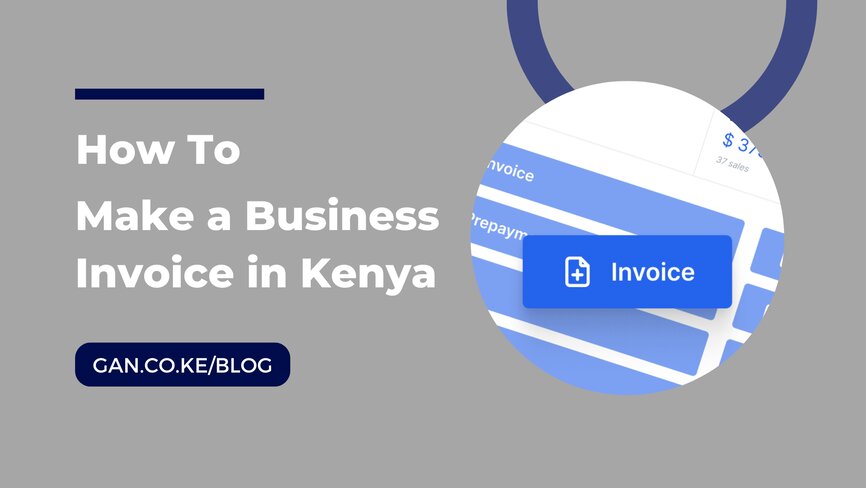
An invoice is a formal document that you provide to your customer following their purchase of products or services. It specifies the payment amount and the deadline.
In the event that products or services are bought on credit, the invoice often details the conditions of the agreement and offers details on the various payment options.
- It serves as a record of the sale for both the client and the business.
- It proves that a customer has to pay you for the services you provide.
- It provides written confirmation of the terms of the payment arrangement between your company and its customer.
It needs to identify itself as such on the front. It typically has a number, which is a special identification used for both internal and external referencing.
If there is a problem with the invoice, it also includes the seller’s or service provider’s contact information. The conditions of payment, any discounts, information about early payments, and late payment fees may all be included.
Together with the unit cost of each item, the total number of units ordered, freight, handling, shipping, any applicable tax, and the total amount owed are also shown.
It’s crucial to get into the practice of writing sales invoices for every work, even if your company is just getting started. For accounting purposes, a business owner must maintain a thorough record of their sales as well as a record of their revenue.
It also benefits the purchaser in the event of a disagreement.
The Benefits of Issuing an Invoice in Kenya
Since invoices serve as proof of services done and money owed, they function as legally binding contracts between a company and its customers.
As a result, companies generate them to guarantee that their customers pay them.
Businesses use invoices to keep track of sales and handle their finances. They can assist in creating precise business forecasts and give a company useful information about how sales fluctuate over time.
While providing a record of sales is an invoice’s primary function, there are other advantages for your company:
Bookkeeping
You can keep track of all your sales by creating one in Kenya, which will aid you in your bookkeeping endeavors. You can maintain track of your company’s financial transactions with the help of one. They can assist you in determining your cash flow and earnings by keeping track of all sales money that enters your company.
Tax Records
It is required that you do your taxes, and you should do it accurately. Your sales invoices serve as the supporting paperwork for the data you include on your annual tax returns. Your company’s everyday transactions are summarized.
Read Also: Step-by-Step Guide: How to Generate eTIMS Invoices in 5 Easy Steps
Legal Protection
They can help shield your small business from false lawsuits, even though you are not legally required to provide them. They give you information about the services you offer your clients and the timeframe for finishing the work. They also record the amount a client agreed to pay you for those services and signed invoices can be legally binding agreements. If a client doesn’t pay you after numerous reminders, your first invoice will serve as legal proof that the agreed service was performed.
Marketing
It is an excellent marketing tool. You can use the information to inform your business marketing strategies.
You may determine the most and least popular services you provide, as well as other company trends, by looking at your invoices and determining when your services are most in demand.
These trends might help you create effective marketing plans to expand your company.
Tracking Inventory
You can use sales invoices to keep track of your inventory levels and forecast future needs based on previous sales.
You can either use pre-existing software or create your manual tracking system.
Professionalism
Your company’s professionalism is reflected in your invoices. When your clients are aware that you have expert methods and procedures in place, they are more likely to trust you.
Additional advantages consist of:
- Customers are reminded to make on-time payments by it.
- Monitor the sales of your business.
- It serves as a tool for keeping track of both recent and historical transactions.
- To forecast upcoming sales
Free Kenyan Invoice Template
You may quickly build repeatable invoice styles and content by using templates. They only take a few seconds to create and can help you save time in your business. The invoice can be generated with just a few clicks on a template.
An invoice enables you to produce information and layouts that can be repeated, giving the customer a consistent experience. Every time they buy something, they get similar invoices. Your staff will also find it easier to check for information because they will know which details to search for.
Important details are always present thanks to a template. Your employees will establish consistency and simply need to recall a few pieces of information, which they can quickly forget. . Using a template will guarantee that all invoices have the most recent data.
How to Prepare & Send an Invoice in Kenya
Studies have indicated that administrative problems, like inaccurate invoices, account for roughly 61% of late payments. To remain a successful business, your company should be able to create and deliver the right invoice.
Step 1. Personalize & Make Your Invoice Professional
Selecting a professional design and customizing it to fit your brand identity is the first step in creating and mailing your invoice. Make sure that your invoice conveys your company’s personality in a professional manner.
Adding branding to your invoice will assist in maintaining its polished appearance and increase brand recognition. Utilize your logo, colors, typefaces, and other branding elements to convey the values that your company wishes to project. It will make you more identifiable and consistent throughout.
Since your invoice is an extension of your company, it should try to convey the essence of your brand. Your invoice design should be consistent with the components of your website’s social media accounts and other content outlets.
Step 2. Fill Out Your Business Name and Contact Information
Make sure your entire company name appears on your invoice; if you work as a freelancer, include your name as well. Include your phone number, email address, and address in your contact details. Add these facts to the legal and accounting documents you and your client have.
Step 3. Fill In the Customer Details
Input the name and contact details of your client here. Don’t hesitate to ask your client for more information if necessary, and include as much contact information as you can. You can provide the name of the firm and the individual you are billing if you are billing a specific person at that company. Including client and company information facilitates invoice identification and filing.
Step 4. Add the Dates and Indicate the Invoice Number
Before sending the invoice, include the invoice date and the invoice number. (Remember this, particularly if you prepare bills ahead of time.) This is helpful for future filing and reference.
Remember to enter the due date for your client’s payment. This gives the client an overview that they can quickly review to determine their debt and due date.
Step 5. Explain What the Invoice Is For
The goods and services you are billing for are described and quantified in this section. There is some flexibility in how you establish line items if you are in the services industry. Each project, project component, or add-on service could have its own.
The following sections are included in each line item on the template:
An item description is a brief synopsis of the good or service you are charging for.
- Quantity: How many of those item did you supply?
- Price per unit: The cost of each separate item. List the cost of one blog post here, for instance, if you are invoicing for two. (The following category is where you’ll do the math.)
- Total sum for each line: To find your line total, multiply the quantity by the price per unit.
Step 6. Total Up the Money Owed
You must mention the amounts owed for each item in addition to a description of the goods or services rendered. The subtotal, or the quantity of each item, should be placed to the right of each item.
You will progressively add up these amounts to determine the total amount owed as you proceed line by line through the invoice. This last sum ought to appear as the overall cost close to the bottom.
Verify your figures two or three times to make sure you have included all required taxes and that the total amount due is accurate.
Step 7. Explain Acceptable Payment Terms and Conditions
Payment terms should ideally be addressed and mutually agreed upon with the client before the delivery of products or services; nonetheless, you should still explicitly state these conditions prior.
How would you like your services to be compensated? Will you take bank transfers, Mpesa, or cash?
Whichever option you use, be sure the invoice has the correct payment information. In addition to payment options, indicate whether you have a deadline for payment so that your client knows when it’s due.
Indicate whether you accept partial payments or a payment plan of any kind. You want to make your terms of payment as clear as possible. It is more probable that your clients will be transparent and make payments in the manner and on a schedule that you specify.
Step 8. Send Your Invoice
Emailing an invoice is one of the most used methods of requesting payment.
To prevent fraudulent manipulation, just attach them in an uneditable PDF file.






